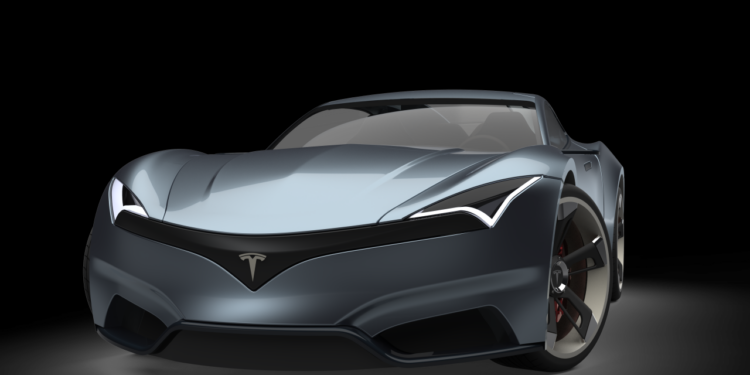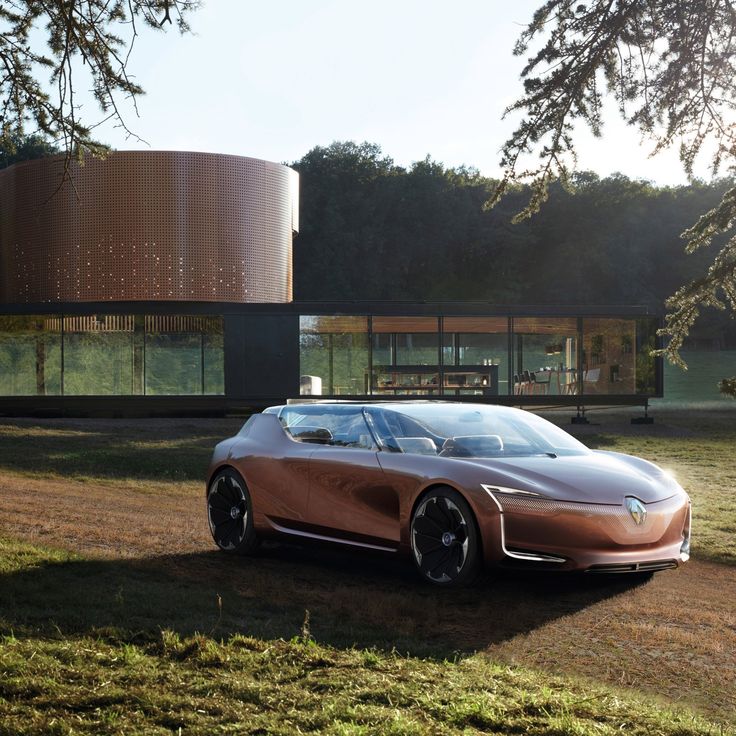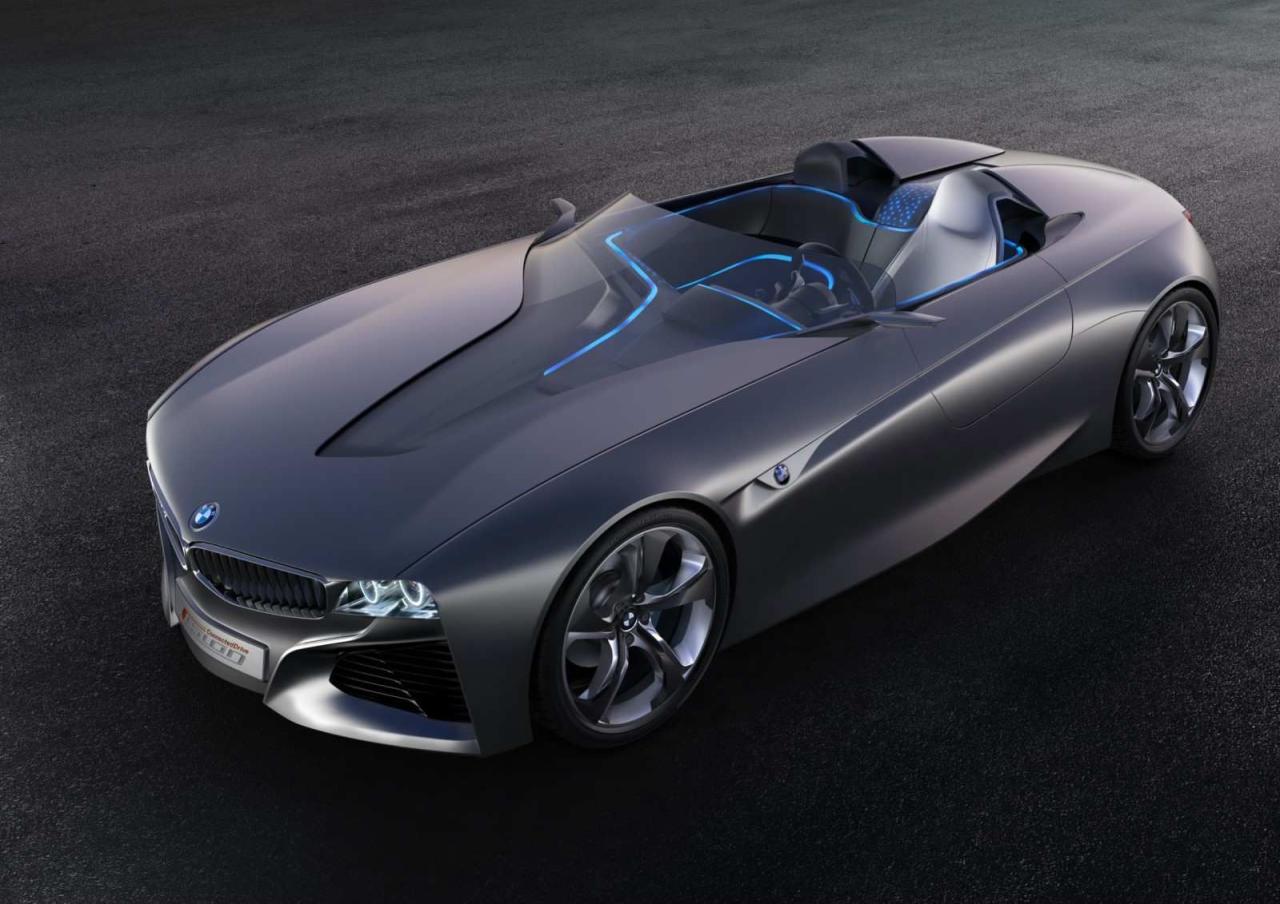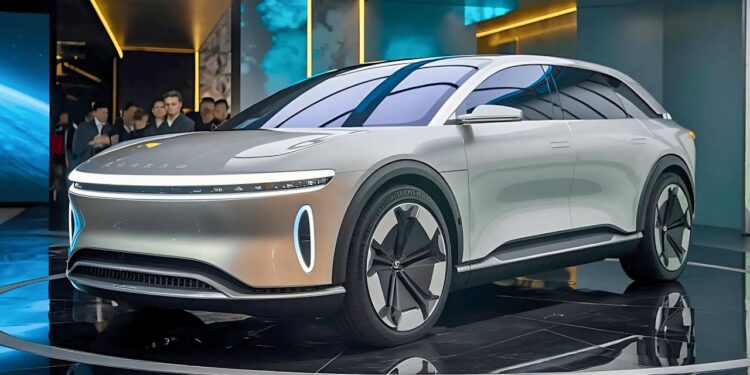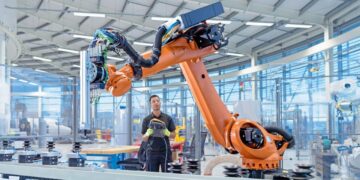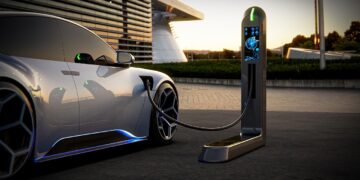The automotive industry is experiencing a radical transformation as innovative car designs capture the attention of a new generation of buyers. In today’s competitive market, aesthetics, functionality, and cutting-edge technology have become pivotal factors in determining a vehicle’s success. Manufacturers are not just building cars—they are crafting experiences that blend art, engineering, and technology to deliver unmatched driving pleasure and environmental sustainability. This article explores the evolution of car design, the factors influencing modern aesthetics, and how innovative design trends are reshaping consumer preferences. With a deep dive into technology, sustainability, and cultural influences, we will uncover why inventive automotive styling is key to attracting new buyers in today’s market.
The Evolution of Car Design
Over the decades, automotive design has evolved from purely functional constructs to works of art that encapsulate technological advancements and cultural trends. The shift from mechanical form to design-driven innovation is evident in every modern vehicle on the road.
A. Historical Milestones in Car Design
-
Early Industrial Designs:
The automotive journey began with utilitarian designs focused solely on functionality. Early models were simple, robust, and engineered to conquer unpaved roads, prioritizing mechanical durability over aesthetics. -
The Influence of Art Deco:
In the mid-20th century, the Art Deco movement influenced car designs with sleek lines and bold geometric shapes. This period marked the beginning of cars as symbols of luxury and status. -
The Muscle Car Era:
The 1960s and 1970s saw the rise of muscle cars, which combined powerful engines with aggressive, aerodynamic designs. These vehicles became icons of performance and were celebrated for their robust aesthetics. -
Modern Minimalism:
Today, minimalist design principles dominate, emphasizing clean lines, aerodynamic efficiency, and advanced materials. Modern designs often integrate LED lighting, digital interfaces, and futuristic styling cues.
B. Key Design Transitions
-
From Function to Form:
Initially, cars were designed with function in mind. Over time, aesthetics took center stage as manufacturers began to view vehicles as lifestyle statements. -
Technological Infusion:
Innovations in materials science, digital design tools, and manufacturing processes have allowed designers to push boundaries. Today’s car designs reflect the fusion of art and technology. -
Consumer-Centric Approaches:
Modern car design is highly influenced by consumer expectations. Buyers today seek vehicles that are not only visually appealing but also offer intuitive functionality and comfort.
Factors Driving Modern Automotive Design
Innovative car designs are not the result of a singular factor; they emerge from a complex interplay of technological advances, market trends, and cultural shifts.
A. Technological Advancements
The rapid pace of technology has fundamentally altered the design landscape. Manufacturers now integrate state-of-the-art features into every element of a car’s design.
-
Advanced Materials:
Lightweight composites and high-strength alloys reduce weight without sacrificing safety, enabling more dynamic design possibilities. -
Computer-Aided Design (CAD):
CAD and simulation software have revolutionized the design process, allowing for detailed prototyping and testing before physical models are built. -
3D Printing and Rapid Prototyping:
These technologies have shortened development cycles, allowing designers to experiment with innovative shapes and forms that were once impossible.
B. Consumer Demands
Modern buyers are more discerning than ever. They expect their vehicles to reflect their personal style while offering cutting-edge performance and safety.
-
Customization Options:
Personalization has become a hallmark of modern design. Consumers are drawn to vehicles that offer customizable features—both in terms of aesthetics and technology. -
Digital Integration:
With the rise of smartphones and digital ecosystems, buyers expect seamless connectivity in their vehicles. Infotainment systems, smart dashboards, and integrated voice controls are now standard. -
Sustainability Concerns:
Eco-conscious consumers prioritize sustainability. As a result, manufacturers are investing in green design elements, such as recyclable materials and energy-efficient systems.
C. Regulatory and Environmental Pressures
Governments worldwide are imposing stricter regulations on emissions and safety, influencing how cars are designed.
-
Emissions Standards:
Tightening environmental regulations have spurred the development of electric vehicles (EVs) and hybrid models. Innovative designs now incorporate battery placement, aerodynamic efficiency, and energy recuperation systems. -
Safety Requirements:
Advanced safety features, including collision avoidance systems and adaptive cruise control, are now integral to car design. These requirements have led to the integration of sensors and cameras, which in turn shape the overall aesthetic of modern vehicles.
Impact of Innovative Car Designs on Buyer Behavior
A well-crafted design does more than catch the eye—it creates an emotional connection that can drive consumer decisions. Innovative car designs influence buyer behavior in several critical ways.
A. Enhancing Brand Identity
Car designs often serve as the visual representation of a brand’s identity. A unique design language can differentiate a manufacturer from its competitors and build a loyal customer base.
-
Iconic Elements:
Signature design features—such as a distinctive grille, bold headlight design, or unique body contours—can become synonymous with a brand. These elements not only enhance recognition but also instill trust and reliability in the buyer. -
Emotional Appeal:
A visually appealing car can evoke a range of emotions. Whether it’s the thrill of speed, the allure of luxury, or the promise of futuristic technology, design has the power to connect with consumers on a personal level.
B. Driving Purchase Decisions
Innovative designs often serve as a catalyst for sales. In a competitive market, distinctive styling can tip the scales in favor of one vehicle over another.
-
First Impressions:
The initial visual appeal of a car plays a significant role in purchase decisions. A sleek, modern design can capture attention at first glance, prompting potential buyers to explore further. -
Perceived Value:
A well-designed vehicle often conveys quality and sophistication. Consumers are willing to invest more in a car that not only performs well but also looks exceptional.
C. Influencing Market Trends
The success of innovative car designs can influence broader market trends, setting new benchmarks for design and performance.
-
Trendsetting Models:
Groundbreaking designs by leading manufacturers often inspire the entire industry. When a new design becomes popular, competitors are compelled to adopt similar aesthetics to remain relevant. -
Consumer Expectations:
As innovative designs become the norm, consumer expectations evolve. Buyers begin to expect more than just functionality—they demand vehicles that are an extension of their lifestyle and values.
Cutting-Edge Technologies Shaping Car Designs
Modern automotive design is increasingly driven by technology. Advanced systems and materials are not only enhancing performance but also allowing for innovative aesthetics that were once thought impossible.
A. Digital Design and Virtual Reality
The integration of digital tools has transformed how cars are conceptualized and designed.
-
Virtual Prototyping:
Virtual reality (VR) and augmented reality (AR) tools enable designers to create and interact with three-dimensional models of vehicles. This immersive experience facilitates rapid iterations and design refinements. -
Simulation Software:
Advanced simulation programs test the aerodynamics, structural integrity, and crashworthiness of designs. This ensures that innovative aesthetics do not compromise safety or performance.
B. Smart Materials and Manufacturing
Innovations in materials science are at the forefront of modern car design.
-
Lightweight Composites:
The use of carbon fiber and other composite materials has significantly reduced vehicle weight, contributing to improved fuel efficiency and handling. -
Adaptive Materials:
Emerging materials can change properties in response to external stimuli. For example, self-healing coatings and shape-memory alloys offer both durability and flexibility in design. -
3D Printing:
Additive manufacturing enables the production of complex components with precision. This technology allows designers to experiment with unconventional shapes and structures, breaking free from the limitations of traditional manufacturing methods.
C. Integration of Connected Technologies
The convergence of connectivity and design is creating vehicles that are more intelligent and responsive.
-
Infotainment Systems:
Integrated digital dashboards and advanced infotainment systems provide drivers with real-time data and entertainment. These systems are designed to be both visually appealing and highly functional. -
Sensor Technologies:
Modern cars are equipped with an array of sensors, including lidar, radar, and cameras. These components are seamlessly integrated into the vehicle’s design, enhancing safety while contributing to a futuristic look. -
Artificial Intelligence:
AI is being used to optimize everything from engine performance to interior ergonomics. By analyzing user behavior, AI systems can tailor the driving experience, ensuring that every journey is personalized and efficient.
Cultural and Social Influences on Car Design
Automotive design is not created in a vacuum; it reflects broader cultural and social trends. Designers must consider consumer lifestyles, societal values, and global influences when crafting new vehicles.
A. The Rise of Lifestyle Branding
Today’s consumers are increasingly influenced by lifestyle brands that reflect their personal values and aspirations.
-
Fashion and Automotive Fusion:
Many car designs draw inspiration from the world of fashion. Sleek lines, bold colors, and unique textures are as much about style as they are about performance. -
Urban Mobility:
In metropolitan areas, compact, efficient, and stylish vehicles are in high demand. Urban buyers value designs that balance aesthetics with practicality, such as easy parking and fuel efficiency.
B. Global Design Trends
Automotive design trends often transcend geographical boundaries, influenced by global movements in art, architecture, and technology.
-
Scandinavian Minimalism:
The clean lines and functional design principles of Scandinavian aesthetics have become popular worldwide. This approach emphasizes simplicity, efficiency, and elegance. -
Japanese Innovation:
Japanese automotive design is renowned for its blend of tradition and modernity. Designers incorporate elements of craftsmanship with high-tech features to create vehicles that are both innovative and reliable. -
American Boldness:
In contrast, American car designs often emphasize power, performance, and rugged aesthetics. The influence of muscle cars and off-road vehicles continues to shape trends in the domestic market.
The Role of Customization in Modern Car Design
One of the most significant trends in automotive design is the demand for personalization. Consumers no longer want a one-size-fits-all vehicle—they seek cars that reflect their individuality and adapt to their unique lifestyles.
A. Customizable Exterior Options
Manufacturers now offer a wide range of customizable features that allow buyers to tailor a car’s appearance to their preferences.
-
Color Schemes:
Options for exterior paint and finishes have expanded dramatically. From matte to metallic, buyers can choose a look that suits their personality. -
Wheel Designs:
Custom alloy wheels and unique rim styles allow for further personalization. These design elements not only enhance aesthetics but also improve performance and handling. -
Body Kits and Accents:
Additional accessories such as spoilers, diffusers, and side skirts enable buyers to modify the vehicle’s silhouette. These modifications can enhance aerodynamics while providing a sportier look.
B. Interior Customization
The interior of a vehicle is equally important when it comes to personalization. Modern cars offer a variety of options designed to create a unique, comfortable, and technologically advanced cabin environment.
-
Premium Materials:
Options for leather, wood, and high-tech synthetic materials allow for luxurious finishes. Custom stitching and embossing can add a personalized touch. -
Advanced Infotainment:
Customizable digital dashboards and infotainment systems ensure that the interior not only looks modern but also functions intuitively. From ambient lighting to bespoke audio systems, every detail can be tailored to the user’s taste. -
Seating Configurations:
Flexible seating arrangements and adjustable ergonomics cater to different lifestyles—whether it’s for family comfort or high-performance driving.
Marketing Strategies and Buyer Engagement
Innovative car designs are only as successful as the marketing strategies used to promote them. Today’s automotive marketing leverages digital platforms, social media, and experiential events to engage potential buyers and build brand loyalty.
A. Digital Marketing and Social Media
The rise of digital marketing has transformed the automotive sales landscape.
-
Social Media Campaigns:
Manufacturers use platforms like Instagram, Facebook, and Twitter to showcase stunning design visuals, behind-the-scenes production stories, and interactive content that resonates with a tech-savvy audience. -
Virtual Showrooms:
Digital showrooms and augmented reality experiences allow buyers to explore innovative car designs from the comfort of their homes. This immersive approach increases engagement and helps bridge the gap between online research and showroom visits. -
Influencer Partnerships:
Collaborating with influencers and automotive bloggers amplifies the reach of new design launches. Authentic reviews and live demonstrations can significantly impact buyer perception and drive sales.
B. Experiential Marketing
Experiential marketing strategies create memorable, hands-on experiences that allow buyers to experience innovative designs firsthand.
-
Test Drive Events:
Organized test drive events enable potential customers to experience the performance, comfort, and aesthetics of new models. These events often include interactive sessions with designers and engineers who explain the nuances behind each design choice. -
Auto Shows and Exhibitions:
High-profile auto shows continue to be vital platforms for unveiling cutting-edge car designs. Manufacturers use these events to generate buzz, garner media attention, and interact directly with car enthusiasts and potential buyers. -
Virtual Reality Experiences:
Integrating VR into marketing campaigns provides an immersive look at the design process and the final product, allowing buyers to virtually step inside and interact with the vehicle’s features.
Challenges and Opportunities in Car Design Innovation
While innovative car designs open up numerous opportunities for manufacturers, they also present distinct challenges that require creative solutions and forward-thinking strategies.
A. Balancing Aesthetics and Functionality
-
Design Compromises:
One of the biggest challenges is ensuring that striking aesthetics do not compromise the vehicle’s functionality and safety. Designers must balance creative freedom with engineering constraints. -
Cost Management:
Innovative designs often require cutting-edge materials and complex manufacturing processes, which can increase production costs. Manufacturers must find ways to offer futuristic designs at competitive prices.
B. Adapting to Rapid Technological Change
-
Keeping Pace with Innovation:
The rapid evolution of technology means that car designs can quickly become outdated. Manufacturers need to adopt agile development processes that allow for continuous updates and improvements. -
Integration of New Technologies:
Seamlessly integrating emerging technologies—such as AI, autonomous driving systems, and connected car features—into innovative designs is a constant challenge. Collaboration between designers, engineers, and tech experts is essential.
C. Navigating Regulatory Environments
-
Safety and Emissions Standards:
Stricter safety and emissions regulations can impact design choices. Manufacturers must innovate within these constraints while still delivering designs that captivate buyers. -
Global Market Variations:
Different regions have unique regulatory and cultural requirements, which means designs must be adaptable to various markets without diluting brand identity.
The Future of Car Design: Trends and Predictions
Looking ahead, the automotive industry is poised for further transformations driven by technological breakthroughs and shifting consumer expectations.
A. Sustainable and Eco-Friendly Designs
-
Green Materials:
Future car designs will increasingly incorporate sustainable materials, such as recycled plastics, natural fibers, and bio-based composites. This shift not only supports environmental initiatives but also appeals to eco-conscious buyers. -
Energy Efficiency:
Advancements in battery technology and alternative fuel systems will continue to shape designs that prioritize energy efficiency without compromising on style or performance.
B. Integration of Autonomous Technology
-
Self-Driving Aesthetics:
As autonomous vehicles become more prevalent, car designs will evolve to accommodate new interior configurations that prioritize passenger comfort and productivity. The focus will shift from driver-centric layouts to multi-functional, lounge-like spaces. -
Connected Ecosystems:
Future designs will integrate seamlessly with smart city infrastructures, allowing vehicles to communicate with traffic systems, infrastructure, and other vehicles for a safer, more efficient travel experience.
C. Personalized and Modular Designs
-
Customization at Scale:
With advances in manufacturing and digital design, buyers will have unprecedented options to personalize their vehicles. Modular design elements may allow owners to upgrade or modify certain aspects of their cars over time. -
Adaptive Interiors:
Interiors will become increasingly modular, allowing for rearrangement and customization based on individual needs—whether it’s for family travel, work, or leisure.
Conclusion
Innovative car designs are more than just an aesthetic evolution; they are a reflection of the broader shifts occurring in technology, consumer behavior, and environmental responsibility. As manufacturers embrace cutting-edge materials, digital tools, and sustainable practices, the future of automotive design looks brighter than ever. Today’s buyers are drawn to vehicles that not only perform exceptionally but also serve as a canvas for technological innovation and personal expression.
The journey from early, purely functional automobiles to today’s sophisticated, design-forward machines illustrates the dynamic interplay between engineering, art, and market forces. With each breakthrough, manufacturers are better equipped to meet the demands of a diverse and evolving customer base. By understanding the drivers behind modern car design and embracing new trends, the automotive industry is poised to captivate a new generation of buyers, setting the stage for a future where innovation and sustainability drive every mile.

